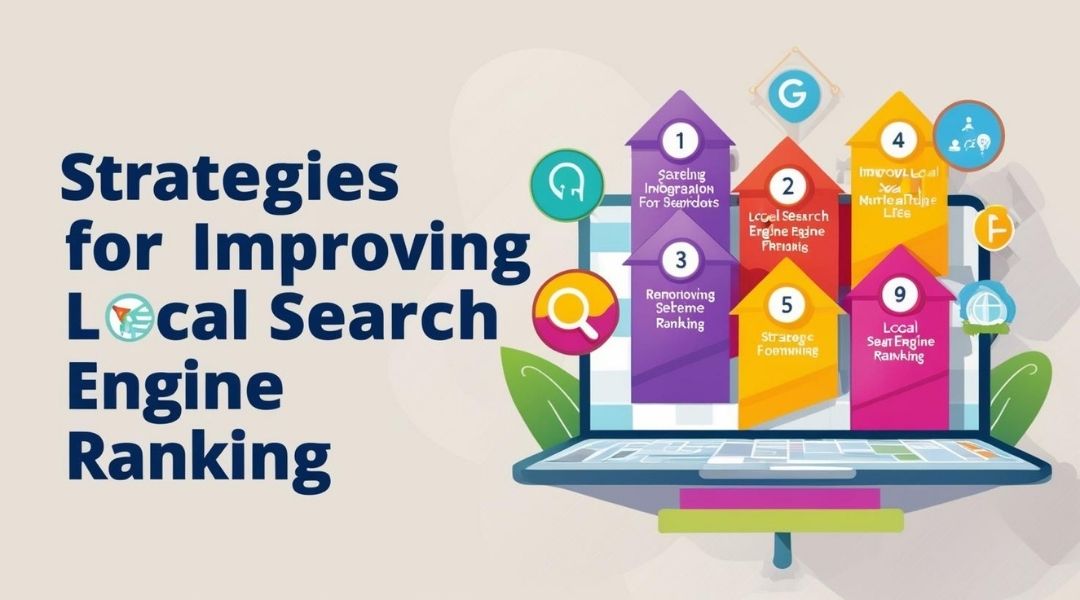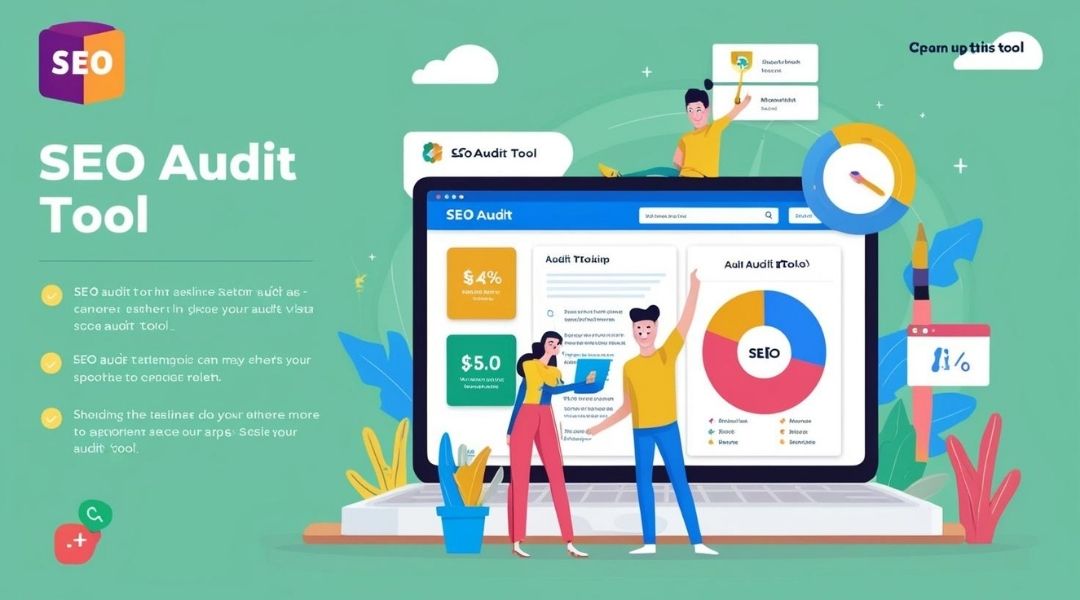Local search can feel frustrating. People want to find your business, but your pages stay hidden behind competitors. The smallest things—they matter. Seriously. Like listing “price per person” or “service options,” just as Sports, Spirits, and Steaks has done.
Adding your address makes you appear on Google Maps and helps searchers see your business first for searches. Google uses websites to learn; the more it learns, the better your site shows up in search results. Improving your local search results is easier than you think; this section will show you how.
Start by refining your Google Business Profile, and you’ll have half the war won.
Optimize Your Google Business Profile
Add accurate information to your Google profile so potential customers find your business easier. Include your name, location, phone number, and descriptive fields like price range. That approach boosts your relevance in local searches.
You also want to claim any existing listing Google created for your business. You can share updates, offers, and events by using Google Posts. Q&A, Maps, and Reviews help build trust and engagement.
Detailed listings often appear near the top for relevant terms. Photos show people what to expect and influence their decisions. Did you know that 98% of local shoppers read online reviews?
Your listing’s visibility can expand by keeping details updated and fresh. Use this free SEO audit tool to identify other ways to strengthen your profile. Search engines value complete listings.
Target Specific Localized Keywords On Pages
- Evaluate Local Search Patterns: You boost visibility when you highlight location terms on each page. Data reveals 80% of consumers search online weekly for businesses. This figure rises to 32% for regular daily searches. You increase leads when your pages include targeted location-based keywords.
- Consider Search Intent and Competitors: You attract better prospects by matching your content to user goals. Search intent influences how people find you through local keyword queries. Checking competitors helps you spot missing keywords or content ideas. You refine pages using insights from rivals to improve local relevance.
- Integrate Location Terms Strategically: You highlight city or neighborhood references clearly. You add nicknames to reinforce your signals. Search engines reward regional terms with visibility. You draw more customers through location keywords.
Use an SEO Audit Tool Regularly
Consider scanning your site at least once a year using a free SEO audit tool. If local search drives your marketing, run these scans every quarter—regular checks catch issues that degrade your visibility, like slow-loading pages or negative signals.
Missed problems can compound, making your efforts less effective. These free platforms automatically check for broken links or missing data. They also highlight keyword opportunities you should incorporate.
You gain insights into traffic trends so that you can refine your focus. Most tools simplify data into clear reports. Act on their findings before those small glitches reduce your local appeal.
Schedule these audits to keep your presence at its best. Mistakes grow over time if no one monitors them. Frequent reviews allow quick fixes and much stronger overall ranking signals.
Ensure NAP Consistency Across Platforms Continuously
You can boost local visibility by carefully checking your NAP data. It helps visitors find accurate details that match their expectations online.
- Verify Data Now: Ensure your business name appears exactly the same. Directories abbreviate addresses, so aim for consistent elements. Do not allow conflicting phone numbers on websites. Incorrect data confuses search engines and lowers trust.
- Check Accuracy Thoroughly: A directory mismatch can display a different phone listing. Online references must confirm your address and hours. NAP data hurts SEO and reduces user confidence. Research shows consistent details improve click-through from results.
- Keep Checking Often: You monitor your listings against inaccurate, outdated information. Frequent checks confirm consistent addresses for each platform. Search Engine Journal notes user experience influences success. Correct listings always guide customers to your service.
Add Location-Specific Structured Data Markup Correctly
You should add location details within your schema markup. That way, search engines detect address data easily. List your business name, phone number, and street information in the code.
JSON-LD remains a popular choice. You can embed it in your page without rewriting core HTML. Use business-specific properties from schema.org that best apply to your operation.
RDFa can also help clarify local details. You must place these attributes inside your page content. Search engines process these tags, which can improve how your page appears in local SERPs.
This method can lead to a higher click rate and better local visibility. Checking your markup with Google’s testing tool is wise before finalizing updates. Avoid tagging irrelevant fields to keep data clear.
This aids in accurate location signals for local ranking.
Create Locally-Focused Content on Blog Posts
You can stand out locally by publishing blog posts that focus on your area. Region-specific writing opens doors to traffic growth and community trust.
- Local content can attract less competitive terms and reach eager audiences. Seoreseller.com saw a 300% jump in traffic by focusing posts on specific locations. Another group helped a dental clinic gain 300% more visibility with local writing.
- Rich local pieces help you address local questions that regular content might miss. Exposure Ninja increased keyword reach by 900% after boosting location-themed posts for accounting firms. You can include community events or local interviews to keep your content shareable.
- Short posts with clear location references serve real user needs and address local queries. Dallas SEO Dogs saw a 72% traffic boost overall simply by removing keyword stuffing.
Encourage Customers to Leave Online Reviews Quickly
Ask for reviews right after customers enjoy your service. This prompt approach boosts response rates. Offer ethical incentives such as a small gift card, and you can see faster feedback.
According to Google’s data, reviews greatly influence local rankings. A positive rating can raise your visibility over local competitors. Busy consumers often respond best when asked promptly.
Try a review management tool with a basic calculator. You can quickly estimate how many reviews you need to increase your star average. Avoid forcing scripted testimonials or waiting too long.
Remind people that their honest opinions help others decide. Quick replies also highlight product strengths or issues. This insight guides you to refine your offerings and boost trust in your community.
Collected feedback helps you detect and fix problems before they escalate.
Improve Page Load Speed and Mobile Experience Intentionally
Swift loading and mobile readiness boost local presence and keep viewers satisfied. Google’s 2020 page experience update highlights speed and usability as top factors for ranking.
- Speed: Aim for LCP under 2.5 seconds to impress visitors. Compress images and reduce extra scripts for smoother rendering. Keep INP below 200ms for quick responses. Keep layout shifts under 0.1 for steady visuals.
- Mobile: Most web traffic comes from phones. Choose user-friendly layouts that minimize pinching or zooming. Give clickable elements enough space for comfortable tapping. Responsive coding ensures content adjusts seamlessly across screen sizes.
- Security: HTTPS encrypts user data and shows a lock symbol. Google rewards secure pages with better standing in results. Avoid intrusive pop-ups that disrupt crucial information. Keep layouts simple to prevent visitor irritation.
Include Internal Links To Relevant Local Pages
You should link to local service or product pages in each blog or section. A recent poll found that strategic internal linking can boost local search visibility by up to 20%. Short, descriptive anchor text helps both visitors and search engines understand the destination page’s relevance and focus. This approach not only improves on-site navigation but also drives users to deeper areas of your site—boosting dwell time, reducing bounce rates, and increasing potential conversions.
By creating thoughtful internal pathways, you enhance user experience and signal strong topical relevance to search engines. A proven tactic is to link from high-traffic blog pages to locally focused service pages to distribute authority and improve visibility. Add clickable text that references neighborhood-specific details, community services, or local promotions to further build trust and engagement.
Make sure your internal links are clearly visible and mobile-friendly. Test them frequently to avoid broken links or misdirects, which can hurt both credibility and rankings. This process creates a durable foundation for a strong local presence—one that positions your business more prominently in geographic-based search results and builds lasting authority in your service area.
Lackluster local visibility can feel frustrating. You’ve spent countless hours trying new platforms, recalibrating keywords, and still wondering why your map listing appears stagnant. Instead of relying solely on technical fixes, focus on real connections with your community—host events, partner with nearby nonprofits, and ramp up consistent customer reviews across trusted platforms.
Ensure your business information is accurate and identical across all directories, especially Google Business Profile. Even minor inconsistencies can delay ranking improvements. To build even more momentum, pursue local press coverage, sponsor neighborhood festivals, and find creative ways to bring people together in your region. These real-world actions, combined with optimized digital strategies, support lasting visibility.
By layering SEO tactics with authentic community engagement and regular site improvements, your business can significantly improve its local ranking. With time and consistency, you’ll likely notice increased traffic, more calls, and higher conversion rates. That’s the payoff—and it starts with a smart, locally focused linking strategy.









